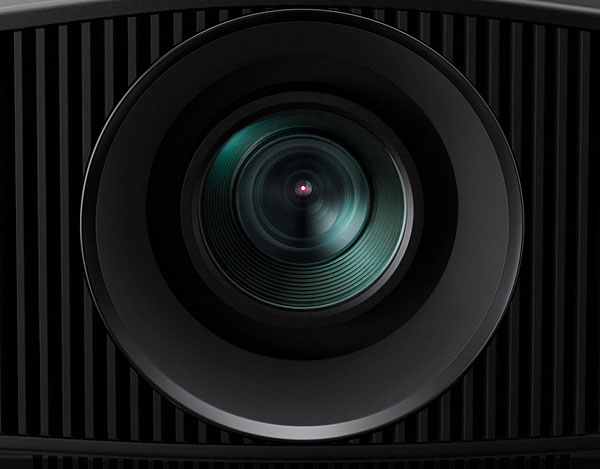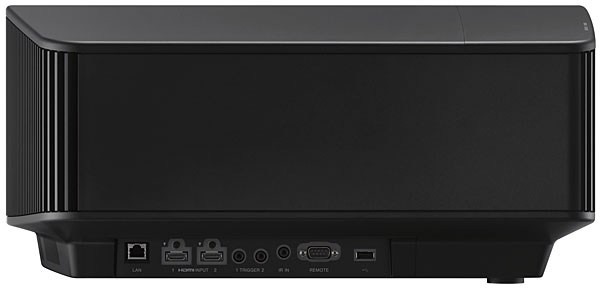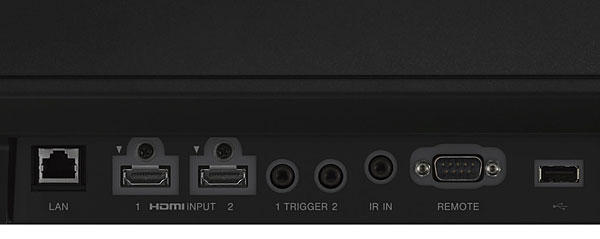Unfortunately, Sony's propensity to overcharge for their projectors (compared to the competition) continues. This is specially offensive in their Native 4k models. A Laser light engine is fantastic, but only if the overall performance of the 915ES was comparable to JVC's NX9 (which is not). Thank you Kris for a thorough examination of the 915ES, and your astute expert observations.
Sony VPL-VW915ES 4K LCOS Projector Review

AT A GLANCE
Plus
True 4K resolution
Laser light source
Excellent out-of-box color accuracy
Minus
Some limitations with HDR
Steep price for feature set
THE VERDICT
Sony's new projector is capable of delivering dazzling images, though it lacks some cutting-edge features and components expected at this price point.
Three years ago, Sony introduced the VPL-VW885ES, a 4K LCOS projector with a laser light engine. I found the 885ES to be capable of throwing high-quality images when I reviewed it, but in the end wasn't fully enamored with the new projector. Basically, I felt it had obvious shortcomings that were hard to ignore at the premium $25,000 price. And while the company issued a firmware update in 2019 that directly addressed some points I had complained about in my review, the 885ES is now being replaced in Sony's projector lineup with the VPL-VW915ES, a model that builds on the successful aspects of the previous design while coming in at a lower $20,000 price point.
Same Look, New Thrills
It didn't take very long to figure out that the 915ES is nearly identical in every way to the 885ES from a hardware perspective. The new projector's chassis, dual blue laser light engine, native 4K SXRD (LCOS) panels, remote control, and onscreen menus are essentially identical to that previous model. At first, I had trouble trying to figure out exactly what was different. During a talk with a Sony rep, I learned that the main difference from the 885ES is an update to the projector's X1 video chip. The 915ES features a revised version called X1 for Projectors that provides a higher level of processing granularity—something I'll touch on later in this review.

The 915ES uses the same lens as the 885ES, one that's fully motorized for zoom, focus, and lens shift and includes a range of memory slots for different positions and settings. I'd be remiss to not mention that I find this to be a shortcoming: At this price point, Sony really should add the ARC-F lens from the company's higher-end 995ES/5000ES projectors to provide greater value separation between the 915ES and lower-priced models that use the same lens assembly (715ES/295ES). The chassis of the 915ES is wider than most projectors I've had in my room, but it's also shallower than many larger designs. From remote commands to HDMI synching, the projector's operation is very responsive, and I found it to be on the quieter side even at the highest laser output level.

The 915ES features two full-bandwidth HDMI 2.0 inputs on its side panel. I was hoping this design would get HDMI 2.1 connections in anticipation of Sony's upcoming PlayStation 5 console that supports the new spec, but new HDMI 2.1 input chips unfortunately haven't hit the projector world yet. For Sony, that's a bit of a missed cross-promotion opportunity, but HDMI 2.1 support, which largely benefits only the gaming community, is still limited even on new flat-panel TVs at this point.

Setting Up
Going through the setup menus on the 915ES, I was glad to see that Sony now provides independent image settings for HDR inputs—the same feature that was brought to the 885ES in a 2019 firmware update. When I originally tested that model, only the contrast adjustment could be set differently compared with an SDR signal for the same input when you fed the projector HDR. This adjustment showed an HDR label next to it in the menu and would set the upper clipping point for the projector's tone map. But in my testing, I found that other settings needed different adjustments for HDR as well, specifically the Brightness and Laser Level settings. Thankfully, that has all been addressed in the new 915ES with independent adjustments for most settings.
Sony's Reality Creation system also gets an update on the 915ES and now includes the Digital Focus Optimizer I evaluated as part of my review of the company's VPL-VW995ES in 2019. This feature is a detail and contrast enhancement tool similar to Darbee processing that provides a sharpness uptick across the screen but can also add unwanted artifacts with some motion images. Artifacts were few and far between for the most part during casual viewing, but I also didn't feel that the projector needed sharpness enhancement following careful setup. Digital Focus Optimizer makes more sense for this model given its optics limitations compared with Sony's 995ES and 5000ES projectors, but the lens on the 915 does a great job overall with pixel focus.
Another complaint I had with the 885ES was the lack of any iris support. The dynamic laser dimming system in that model did help with contrast, but it wasn't as effective as a dynamic iris, a feature included in Sony's lamp-based projectors. The iris/laser dimming solution provided in the 915ES does help its contrast performance a bit, but I would prefer to have a way to manually adjust the iris to set maximum light output rather than relying on the Laser Level setting. The reason: by stepping down the laser level to lower peak white level, you get a decrease in overall dynamic range since it doesn't also lower black level—something an iris control would do.
Given the limitations of the iris/laser dimming solution in the 915ES, its overall contrast performance was still quite good. Sony continues to make some of the best projectors at any price point when it comes to dynamic range, with only JVC's lineup delivering better performance, and even then, only when you get extremely close to absolute black. You can read my full report on the 915's contrast performance in the Test Bench section of this review.
- Log in or register to post comments


Kris never said the NX9 is better. That's completely false. First of all, the NX9 is lamp-based. Totally inferior to laser based in every way. I compared the Sony laser against the JVC laser and the Sony came out on top. First of all, the latency is about 2X faster on the Sony, so if you're a gamer, forget about the JVC. Second, the ARC-F lens is a little sharper than JVC's all glass sense, which makes sense given Sony's photographic experience. Third, the chassis is smaller - JVC's laser units simply wouldn't fit in my current AV cabinet.

The VW915ES was reviewed. It does not use the ARC-F lens. The $35,000 VW995ES is the one that uses the ARC-F lens. As for lag, I am seeing 36ms for 1080P and 31ms for 4K. Yes that is lower lag than the JVC, but just barely lower, not close to half. JVC has been measured at 39ms for 4k in its gaming mode.

Been looking at upgrading my VPL-VW295 but just don't see a huge enough difference to justify the 15K cost difference. I might wait another generation and I am with you, JVC just are too big and fan noise was too loud compared to the Sony and my listening position. I might play the waiting game, as I don't have a ton of life on my lamp yet.

Can you compare this to the latest JVC projector from the point of view of black level and shadow detail? I have a 9 year old 1080p JVC projector with a 120 inch screen and despite auditioning multiple 4k projectors including the prior Sony laser projector I haven't seen enough of a performance difference to justify upgrading. Are we at the point where there are obvious differences now?

The JVCs still have the upper hand in overall contrast capabilities and shadow detail performance. Their native contrast is still much higher and only get better if you engage their dynamic solutions. The Sony laser designs don't do dynamic contrast as well as their lamp based designs, so you are really relying on their native contrast. While this is still higher than most projectors on the market today, it is still only about half the contrast capability of the newer JVCs.

Wrong, and wrong again.
The JVC has a tiny, repeat TINY, benefit to contrast; but for that you have almost double the latency. So if you're a gamer, you're not going to love the lag of the JVCs. Second, the JVC laser units are louder, larger, and slower to HDMI handshake when you switch inputs. Third, the glass lens of the Sony (ARC-F) is sharper (marginally) than the JVC. That makes sense, when you consider Sony's photographic experience.

Kris, I loved the review. Being an ISF calibrator during the hard times (3 tube projectors with faroudja line scalers and D6500 light boxes LOL), I would like to know why so many high end barco projectors are not reviewed and unfortunately there are no places to view them on demonstration.
Since 85% of movie theater projectors are Barcos in the Commerical world, can you fill in the gaps of understanding for me on the quality of these projectors if you have seen them. For example, the Bragi Cinemascope projector I have been trying to read about and would love to know more about. It has a native 2.37:1 ratio chips so that no anamorphic lens is a required. It has 2100 lumens but they claim it appears so much brighter because of the technology. They have partnered with DT Screens but I can't hardly find great in depth reviews about them compared to the Stewart screens. The Bragi is around 30-35k so it is more than the Sony and the JVC but I would love to know what I am getting (if anything) when you go higher in price. Any detailed information would be tremendous or an AWESOME review of a Bragi would be beneficial to many of your readers.
Looking forward to your response and more in depth articles.

Thanks for the feedback! I have seen two Bragi projectors recently, the "widescreen" version and the 16x9 version. These are really not anything like their DCi counterparts you see in cinema installations and rely on the XPR based DLP chips to achieve their resolution. So they are a pixel shifting solution as opposed to the native 4K imaging chips used in Sony and JVC models. They also suffer from the limitations of the dynamic range potential of the more recent DLP DMD chips, which is only a fraction of the contrast potential of the SXRD and D-ILA brands mentioned before. And at these price points it makes any type of comparison almost not fair given the vast differences in performance between what the Barco's you mentioned can achieve in direct comparison with the Sony/JVC models at half the cost but far higher performance metrics. Maybe at some point we will do some reviews of the upper DLP offerings from folks like Barco, but that is not my call!

Kris,
Thank you for the reply. I have two more questions.
From what the rep told me, the Bragi has a single chip DLP .9" I believe and its native resolution is 5120 x 2160. From my understanding to be considered a true 4k resolution it has to be 3860 x 2160. Since the Bragi Cinemascope is native 2.37:1 ratio I didn't believe any pixel shifting was occurring. Do I have my understanding screwed up on this?
Here is the spec on the one I am referring to.
https://www.barco.com/en/product/bragi%20cinemascope#specs
2.) Have you seen DT screens at all? I am so interested in their Dynamic screens because of their auto detection side masking.
Again, I REALLY appreciate your comments here.

Why have you not listed the lumens of brightness for this projector? How do you measure it? How might you convert that to nits?

"How does this compare to the latest JVC projector in terms of black levels and shadow detail? I currently use a 9-year-old 1080p JVC projector with a 120-inch screen. Despite testing several 4K projectors, including the previous Sony laser model, I haven't found the performance improvements significant enough to warrant an upgrade. Have we reached a point where the differences are now clearly noticeable?. flip a coin tool






























































